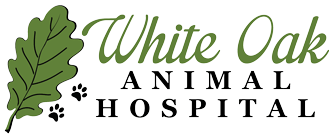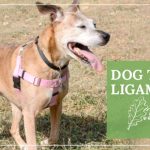
Once your pet has been diagnosed, talk with your vet about options for dog Cushing’s disease treatments.
Pet parents have natural or holistic options as well as traditional Western medical options.
While natural options are considered more gentle, medical treatments may be more effective.
Consult with your veterinarian and do your research before making a decision about your pet’s dog Cushing’s disease treatments.
Medical Dog Cushing’s Disease Treatments
Pharmaceutical options include:
- Mitotane
- Trilostane
- Ketoconazole
- L-deprenyl
The current treatment for pituitary-dependent Cushing’s is chemotherapy with op-DDD (Mitotane, Lysodren®).
Mitotane
Mitotane is derived from the insecticide DDT.
The drug causes severe and progressive necrosis of certain parts of the adrenal gland.
Normal dogs are typically resistant to the effects of the drug.
Prior to administration of Mitotane, confirm diagnosis of hyperadrenocorticism.
Dogs should be healthy in all other ways with a good appetite.
Since Mitotane selectively destroys the adrenal gland, the risk of too much destruction is always a possibility.
When too much adrenal destruction occurs, prednisone may be necessary to ameliorate the damage.
Mitotane should be administered for up to 10 days until water consumption decreases, or until a decreased appetite, depression, diarrhea, or vomiting are observed.
At this point, the dog should be reevaluated and an ACTH stimulation test performed.
Prednisone treatment should begin in pets that are showing clinical signs of too little cortisol until the results of the ACTH stimulation test are known.
The goal of treatment for Cushing’s Disease is to have both the pre- and post-cortisol measurement in the normal range.
Mitotane Maintenance Therapy
Maintenance therapy is started once the ACTH stimulation test is suppressed and prednisone therapy has been discontinued.
Failure to use maintenance therapy will result in regrowth of the adrenal cortex and recurrence of clinical signs.
Efficacy of maintenance therapy is monitored by an ACTH stimulation test in 1 month and then every 3 to 4 months thereafter.
Reasons for treatment failure include the following:
- Incorrect diagnosis
- Presence of an adrenal tumor (although some adrenal tumors will respond)
- Iatrogenic Cushing’s due to prednisone administration
- The need for a higher dose or continued treatment
Side effects of Mitotane can be severe and include:
- Gastric irritation
- Addisonian crisis (drug eats away too much adrenal tissue)
- Occasionally neurologic signs
- Inability to distinguish drug intolerance versus Addisonian crisis
Average survival time of 200 dogs treated with Mitotane was 2.2 years (between 10 days and 8.2 years).
In the majority of cases, Mitotane produces excellent control of symptoms associated with Cushing’s.
Trilostane
In dogs that fail to respond to Mitotane or dogs that do not tolerate the drug, the next choice of therapy is Trilostane.
Trilostane is a synthetic hormonally inactive steroid.
The drug blocks production of a number of adrenal hormones, including cortisol and aldosterone.
Most dogs tolerate Trilostane well.
Adverse effects have been reported, including diarrhea, vomiting, and lethargy, but is usually mild and self-limiting.
Trilostane has a lower reported incidence of side effects compared with Mitotane.
Commonly reported adverse reactions to include:
- Loss of appetite
- Vomiting
- Lethargy
- Diarrhea
- Weakness
Less common but potentially fatal reactions include:
- Hemorrhagic diarrhea
- Collapse
- Addisonian crisis
- Adrenal death
Ketoconazole
Ketoconazole is an orally active antifungal agent commonly used in veterinary medicine to treat fungal infections.
Long-term, Ketoconazole does not result in good control of Cushing’s disease.
A dose of 30 mg/kg every 12 hours results in a rapid reduction of serum cortisol concentrations in most animals.
Signs of toxicity are uncommon but include anorexia and vomiting.
The disadvantages of Ketoconazole include:
- Need for daily medication
- Cost
- Poor long-term control in many cases
Ketoconazole is most useful for the palliative therapy of metastatic adrenal tumors and for presurgical stabilization of operable adrenal tumors.
L-deprenyl
L-deprenyl is a selective monoamine oxidase type B inhibitor, which increases CNS dopamine concentrations.
Treatment with L-deprenyl has recently been reported to be effective in less than 20% of dogs with PDH.
Surgical Treatment of Adrenocortical Tumors
In the circumstance of an adrenal tumor, treatment involves either surgical resection of the tumor or medical therapy with Mitotane, Trilostane, or ketoconazole.
Removal of the adrenal gland should be reserved for dogs without extensive tumor invasion or metastasis.
Abdominal ultrasound can assist in planning the surgery.
After surgically removing the diseased gland, the normal adrenal gland tissue will be atrophic and glucocorticoid.
Sometimes mineralocorticoid supplementation is necessary for the periods before and after surgery.
The prognosis for dogs whose adrenocortical tumors were removed without metastatic disease is good.
In one study, 80% of dogs survived the perioperative period.
Some dogs with inoperable tumors or metastatic disease may respond to medical treatment with high doses of op-DDD (Mitotane).
Mitotane is often successful in controlling clinical signs and in some cases may also result in tumor shrinkage.
Natural Dog Cushing’s Disease Treatments
The following natural treatments can benefit dogs with Cushing’s:
- Milk Thistle
- Fish Oil
- Ophiopogon powder
- Rehmannia 11
- Rehmannia 14
Milk Thistle
Milk thistle is a European medicinal plant that contains silymarin (silymarin, silibinin, sylibin), a flavonoid complex.
Its primary use in veterinary medicine is with liver disease because of its antioxidant activity. Milk thistle also aids the flow of bile throughout the liver.
Dogs with Cushing’s disease frequently have elevated liver enzymes (ALP).
Increased circulating cortisol causes steroid hepatopathy, which exacerbates the clinical signs of Cushing’s.
The recommended dosage is 10mg per pound of body weight per day. Milk thistle can be purchased at any local drug store.
Fish Oil
Fish oil is beneficial because of its direct effects on the skin and increased circulating fats/lipids in the bloodstream (hyperlipidemia).
Cushing’s disease and increased cortisol levels decrease the ability of dogs to fight infections.
In turn, many dogs with Cushing’s chronically battle hot spots and inflamed skin.
Fish oil is a great natural remedy to alleviate inflamed skin.
Vets typically prescribe 60-100mg/kg twice daily.
Fish oil capsules are obtained over-the-counter.
Make sure you read the label carefully to ensure that your dog receives 220 mg/kg body weight of a combination of:
- Alpha-linolenic acid
- Eicosapentaenoic acid (EPA)
- Docosahexaenoic acid (DHA)
Melatonin
Many plants and Chinese medicinal herbs naturally contain melatonin.
Your dog’s body also naturally produces melatonin.
In Chinese medicine, melatonin is cooling, nourishes Yin, and clears heat to help alleviate the symptoms associated with Cushing’s disease.
In Western medicine, melatonin is often used to treat canine alopecia. Melatonin also helps balance hormones and slow the growth of tumors.
A general guideline for dosing melatonin is:
- Dogs under 10 lbs – 1 mg of melatonin every 12 hours (also for those who want to give their dogs very low doses of melatonin)
- Dogs under 30 lbs – 3 mg of melatonin every 12 hours
- Dogs over 30 lbs – 6 mg of melatonin every 12 hours
- Note: Research recommends not exceeding a melatonin dosage of 3 to 6 mg every 8 to 12 hours.
- Note: Make sure you read the label and give your dog supplements containing melatonin only. Colorings and additives may be toxic to your dog.
Note: If melatonin makes your dog excessively sleepy, give melatonin only at night.
Flax Hull Lignans
Flax seeds are called Ya Ma Zi in Chinese medicine.
According to TCVM, flax seeds enter the lung, liver and large intestine meridians.
TCVM recommends flax seeds to alleviate dry skin, intestinal dryness with constipation, pruritus, and alopecia.
In Western medicine, vets prescribe lignans for their phytoestrogen activity.
The University of Tennessee College of Veterinary Medicine recommends giving 1 mg of flax hull lignans per 1 lb of body weight once daily.
When purchasing lignans for your dog, look for a standardized product labeled “Flax Hull Lignans.”
Look for labels with something similar to “40% standardized SDG extract for a total of 25 mg of SDG lignans.”
Eastern Herbals: Ophiopogon Formula
The Western medical indications for Ophiopogon Formula are:
- Cushing’s disease
- Equine Metabolic Syndrome (EMS)
- Insulin resistance
- Diabetes
- Hyperthyroidism
The Traditional Chinese Veterinary Medicine indications are:
- Dry skin with hot ears and feet
- Excessive panting with spontaneous outbursts at night
- Polydipsia (excessive thirst)
- Polyuria (excessive passage of urine)
- Yin deficiency
- Thready, fast pulse
- Red, dry tongue
Ophiopogon Formula consists of herbs that work synergistically to relieve symptoms of Cushing’s Disease, while at the same time addressing the underlying causes of the symptoms.
The Chinese principles of treatment for Ophiopogon Formula are to nourish Yin, clear Heat, and promote body fluids.
Ophiopogon Formula is crafted from Mai Men Dong San.
The main ingredients in Ophiopogon Formula are:
- Bei Sha Shen (Glehnia) – nourishes Yin
- Dan Zhu Ye (Lophatherum) – clears heat
- Ge Gen (Pueraria) – promotes body fluids
- Huang Qin (Scutellaria) – clears heat
- Lu Gen (Phragmites) – clears heat and promote body fluids
- Mai Men Dong (Ophiopogon) – nourishes Yin
- Shan Zha (Crataegus) – resolves food stasis
- Shen Qu (Massa) – resolves food stasis
- Tian Hua Fen (Trichosanthes) – clears heat and promote body fluids
- Wu Mei (Mume) – astringently consolidates the Lung
- Yu Li Ren (Prunus) – moves blood
- Zhi Mu (Anemarrhena) – nourishes yin and clears heat
TCVM vets most commonly prescribe Ophiopogon powder for Cushing’s disease.
In addition, other commonly used Eastern herbals are Liver Happy and Rehmannia 11.
More Powerful Tools for Dog Cushing’s Disease Health Challenges
There are many quick and easy changes you can make at home to help you give your dog an edge on easing Cushing’s disease challenges.
- Learn more about Cushing’s Disease.
- Try Home Cooking. Visit PET | TAO’s Recipe Page, and scroll down to the recipes for dogs with Cushing’s disease. Often, home-cooking makes a huge difference in helping dogs feel better!
- Supplement with medicinal mushrooms. PET | TAO Complement Immune Mushroom Blend eases inflammatory response and immune system stress caused by Cushing’s.
- Try digestive enzymes and probiotics. PET | TAO Harmonize Gi boosts gut health, which in turn helps your dog better process all food nutrients. Improved gut health also boosts immunity and calms allergic response.
- Feed Freeze Dried Liver Treats. According to TCVM, as when Cushing’s disease is present there is almost always Liver Meridian involvement. Liver treats provide Liver Meridian support like as a glandular supplement (Western theory) and via 5-Element Theory (Eastern theory).
- Learn about natural remedies. A combination of melatonin and lignans supplementation helps many dogs suffering from Cushing’s. Many holistic vets recommend melatonin and lignans as dog Cushing’s disease treatments.
- Learn more about TCVM Herbal Remedies. Chinese medicine offers many amazing natural solutions for Cushing’s disease. A good example is:
Related Posts
-
Natural Dog Cushing's Disease Treatments
Natural dog Cushing's disease treatments are easy to use and often very successful. It's pretty…
-
Best Dog ACL Tear Treatments
Much like humans, dogs experience joint pain for a variety of reasons. Sometimes joint pain…
-
What You Should Know About Heartworms and Heartworm Disease
Testing for Heartworms Year after year, you take your pet to his yearly check-up with…
-
What Every Pet Owner Should Know About Pet Allergies
Whether human or pet, allergies usually prove to be a complicated, and sometimes frustrating, topic.…









